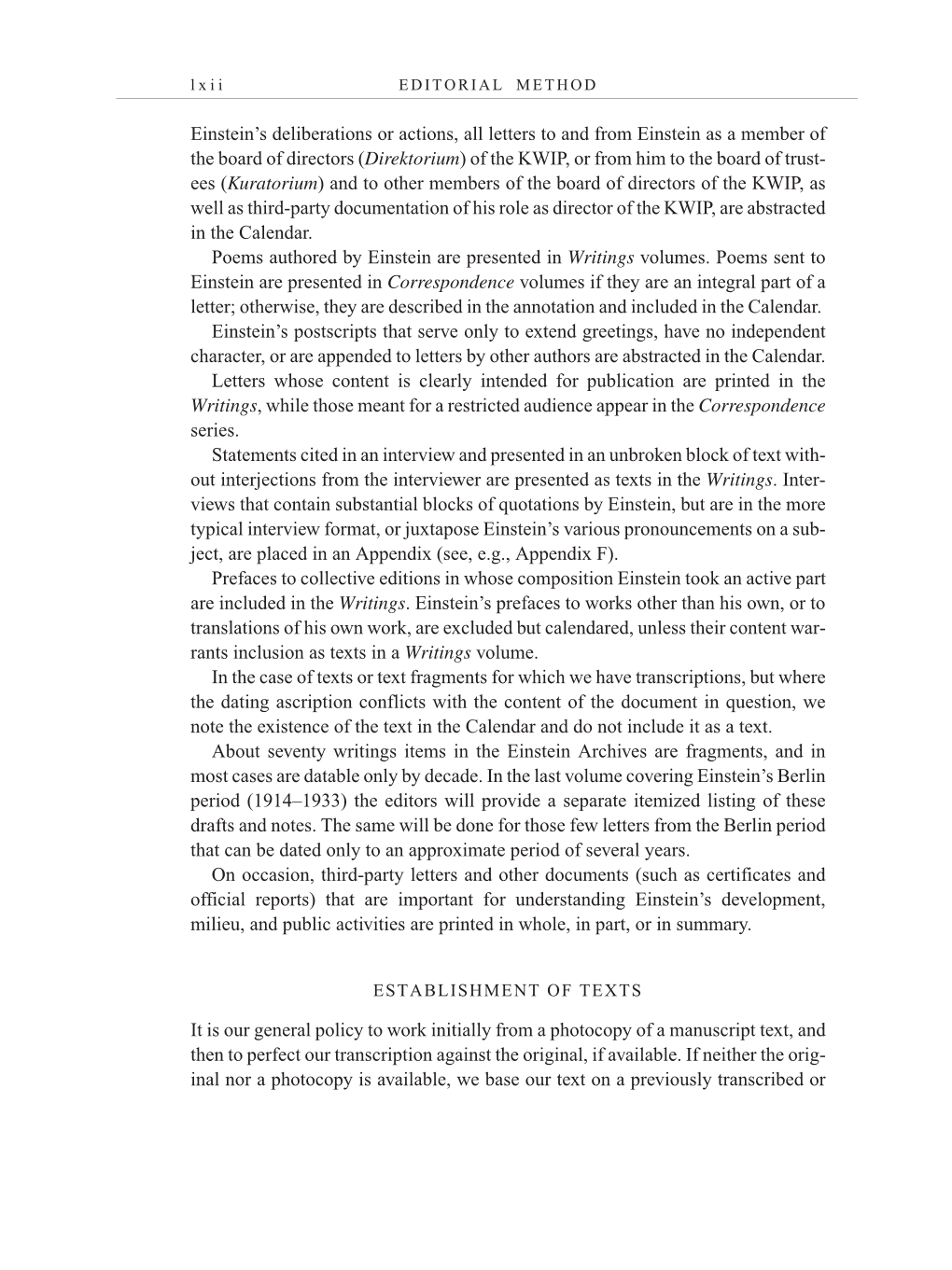l x i i EDITORIAL METHOD
Einstein’s deliberations or actions, all letters to and from Einstein as a member of
the board of directors (Direktorium) of the KWIP, or from him to the board of trust-
ees (Kuratorium) and to other members of the board of directors of the KWIP, as
well as third-party documentation of his role as director of the KWIP, are abstracted
in the Calendar.
Poems authored by Einstein are presented in Writings volumes. Poems sent to
Einstein are presented in Correspondence volumes if they are an integral part of a
letter; otherwise, they are described in the annotation and included in the Calendar.
Einstein’s postscripts that serve only to extend greetings, have no independent
character, or are appended to letters by other authors are abstracted in the Calendar.
Letters whose content is clearly intended for publication are printed in the
Writings, while those meant for a restricted audience appear in the Correspondence
series.
Statements cited in an interview and presented in an unbroken block of text with-
out interjections from the interviewer are presented as texts in the Writings. Inter-
views that contain substantial blocks of quotations by Einstein, but are in the more
typical interview format, or juxtapose Einstein’s various pronouncements on a sub-
ject, are placed in an Appendix (see, e.g., Appendix F).
Prefaces to collective editions in whose composition Einstein took an active part
are included in the Writings. Einstein’s prefaces to works other than his own, or to
translations of his own work, are excluded but calendared, unless their content war-
rants inclusion as texts in a Writings volume.
In the case of texts or text fragments for which we have transcriptions, but where
the dating ascription conflicts with the content of the document in question, we
note the existence of the text in the Calendar and do not include it as a text.
About seventy writings items in the Einstein Archives are fragments, and in
most cases are datable only by decade. In the last volume covering Einstein’s Berlin
period (1914–1933) the editors will provide a separate itemized listing of these
drafts and notes. The same will be done for those few letters from the Berlin period
that can be dated only to an approximate period of several years.
On occasion, third-party letters and other documents (such as certificates and
official reports) that are important for understanding Einstein’s development,
milieu, and public activities are printed in whole, in part, or in summary.
ESTABLISHMENT OF TEXTS
It is our general policy to work initially from a photocopy of a manuscript text, and
then to perfect our transcription against the original, if available. If neither the orig-
inal nor a photocopy is available, we base our text on a previously transcribed or
